

Illutrated map by Leif Czakai, 2024.
The Shoemaker’s Guest is a short story I wrote as part of a collaborative project with Acoustic Territories and StrandLab Almere, with artists Minji Kim and Leif Czakai.
In August 2024, Minji Kim of Acoustic Territories hosted a listening workshop on Almere beach as part of her residency at StrandLab. Alongside 5 local residents, the artists and myself listened to our surroundings with our entire bodies. Through our feet, our arms, our foreheads, our nails. We came together after a silent walk to experiment with various recording equipment, we came together to share impressions and reflections.
All of this material was then used to prepare a sound walk for the TestZone Land x Kunst, a day of experimentation on the Alemeerdestrand. I was asked to produce a story that would be recorded and transmitted to visitors while they contemplated a visual map by Leif Czakai and wandered around the beach.
I decided to write a story about a shoemaker who makes shoes all day and walks in them all night. One day, a terrible storm strikes the town and the shoemaker inadvertly takes the wind home with him. Indra Silar, one of the listening workshop participants lent her voice for the recording of the soundwalk.
The Shoemaker’s Guest is available for streaming on Spotify and Apple Music under the label Acoustic Territories.
A huge thank you to Minji for inviting me to collaborate on this project and trusting my vision. To StrandLab for having me. To Leif for an incredible output. To Indra for lending her beautiful voice and becoming a part of this project.
In August 2024, Minji Kim of Acoustic Territories hosted a listening workshop on Almere beach as part of her residency at StrandLab. Alongside 5 local residents, the artists and myself listened to our surroundings with our entire bodies. Through our feet, our arms, our foreheads, our nails. We came together after a silent walk to experiment with various recording equipment, we came together to share impressions and reflections.
All of this material was then used to prepare a sound walk for the TestZone Land x Kunst, a day of experimentation on the Alemeerdestrand. I was asked to produce a story that would be recorded and transmitted to visitors while they contemplated a visual map by Leif Czakai and wandered around the beach.
I decided to write a story about a shoemaker who makes shoes all day and walks in them all night. One day, a terrible storm strikes the town and the shoemaker inadvertly takes the wind home with him. Indra Silar, one of the listening workshop participants lent her voice for the recording of the soundwalk.
The Shoemaker’s Guest is available for streaming on Spotify and Apple Music under the label Acoustic Territories.
A huge thank you to Minji for inviting me to collaborate on this project and trusting my vision. To StrandLab for having me. To Leif for an incredible output. To Indra for lending her beautiful voice and becoming a part of this project.



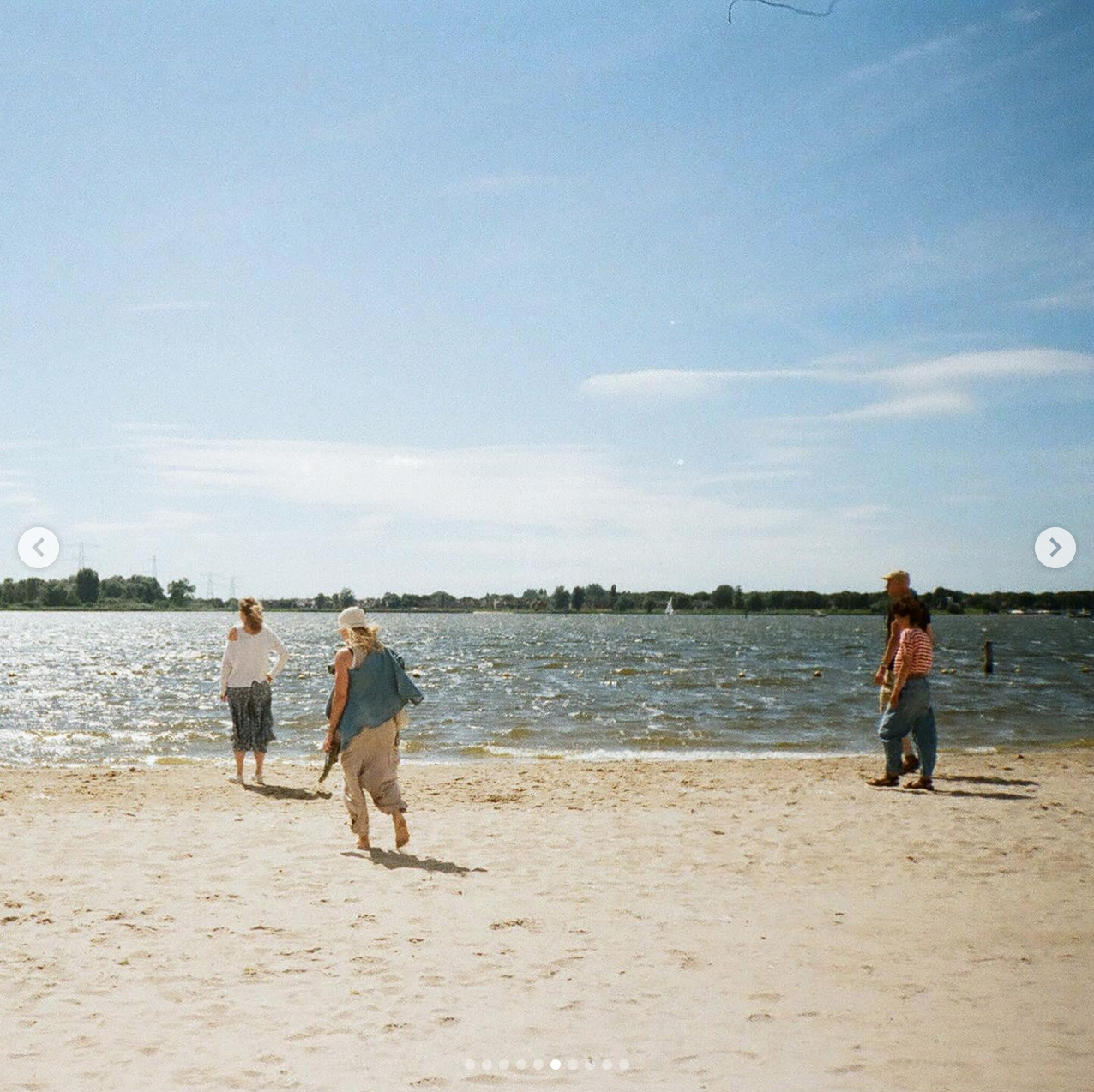


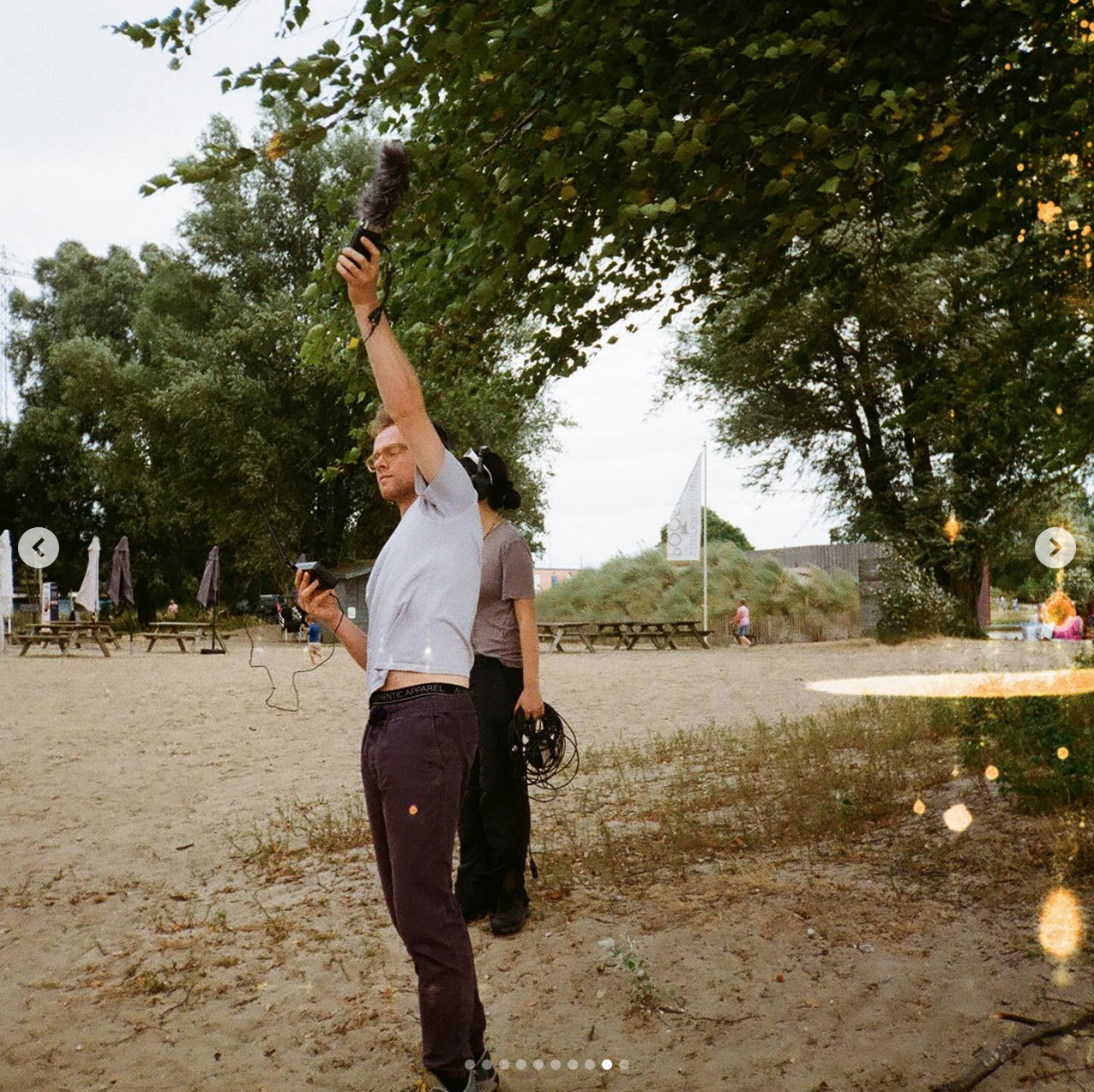
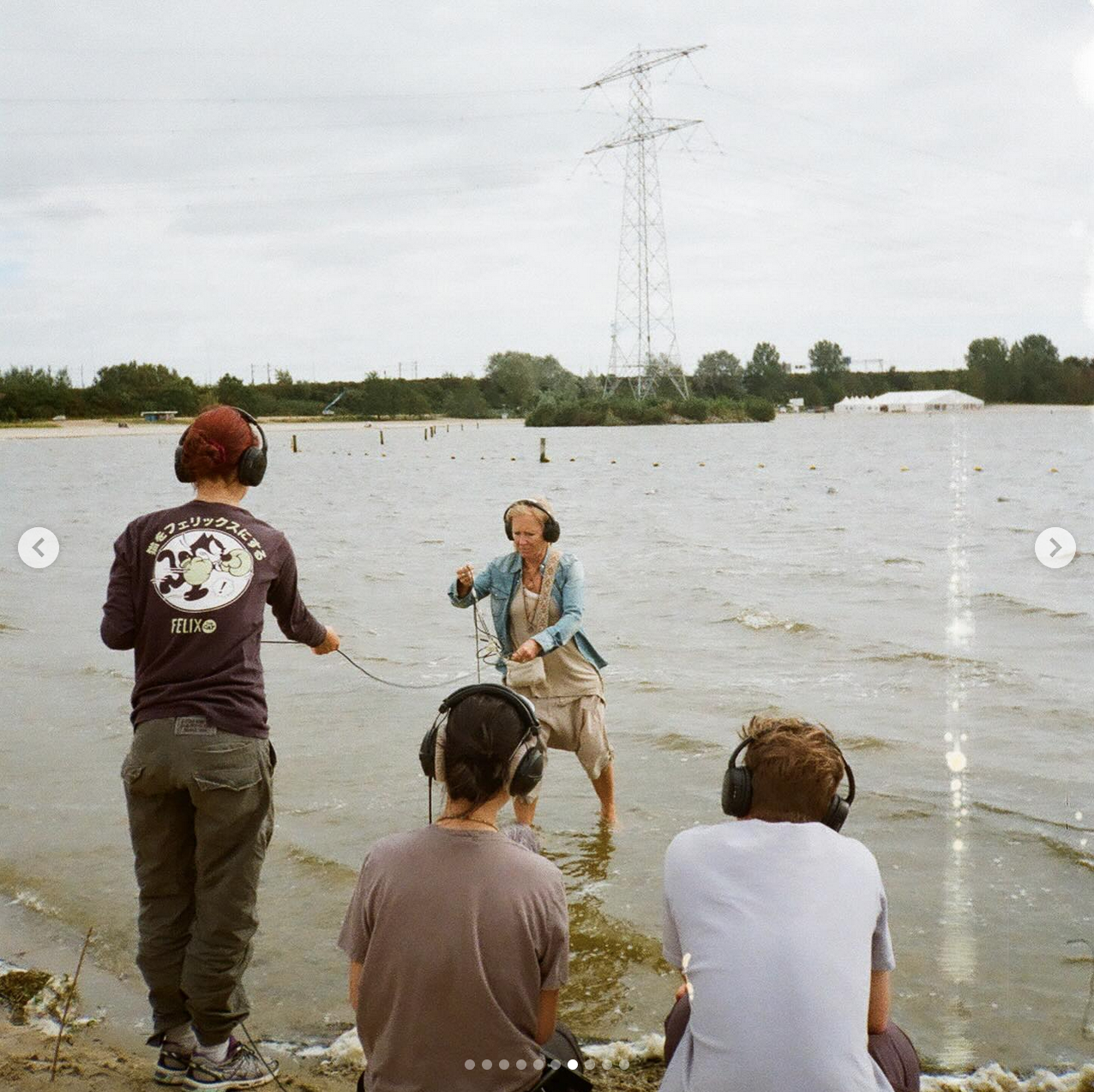

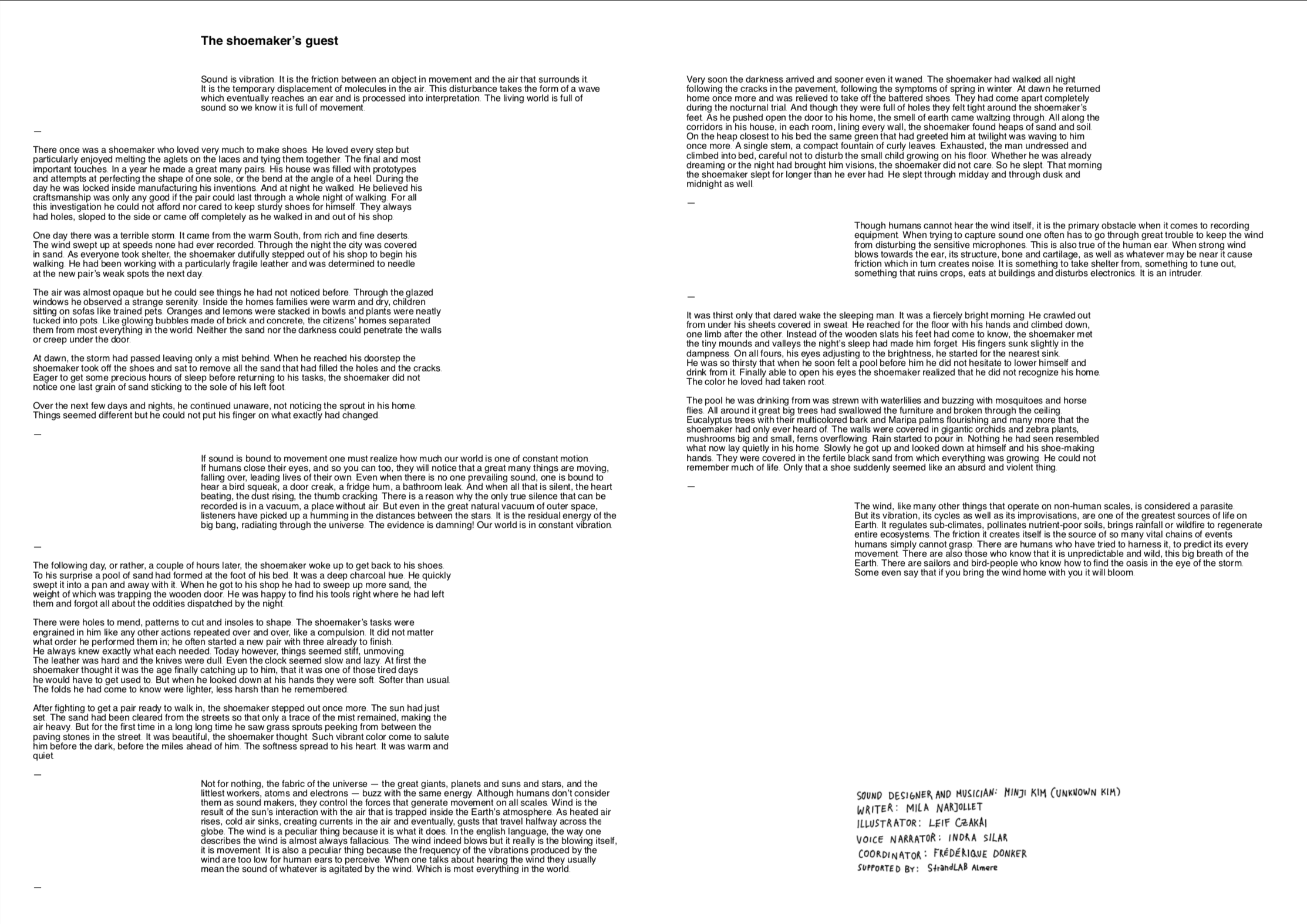
Below, scans of the report forms filled out during
the listening workshop



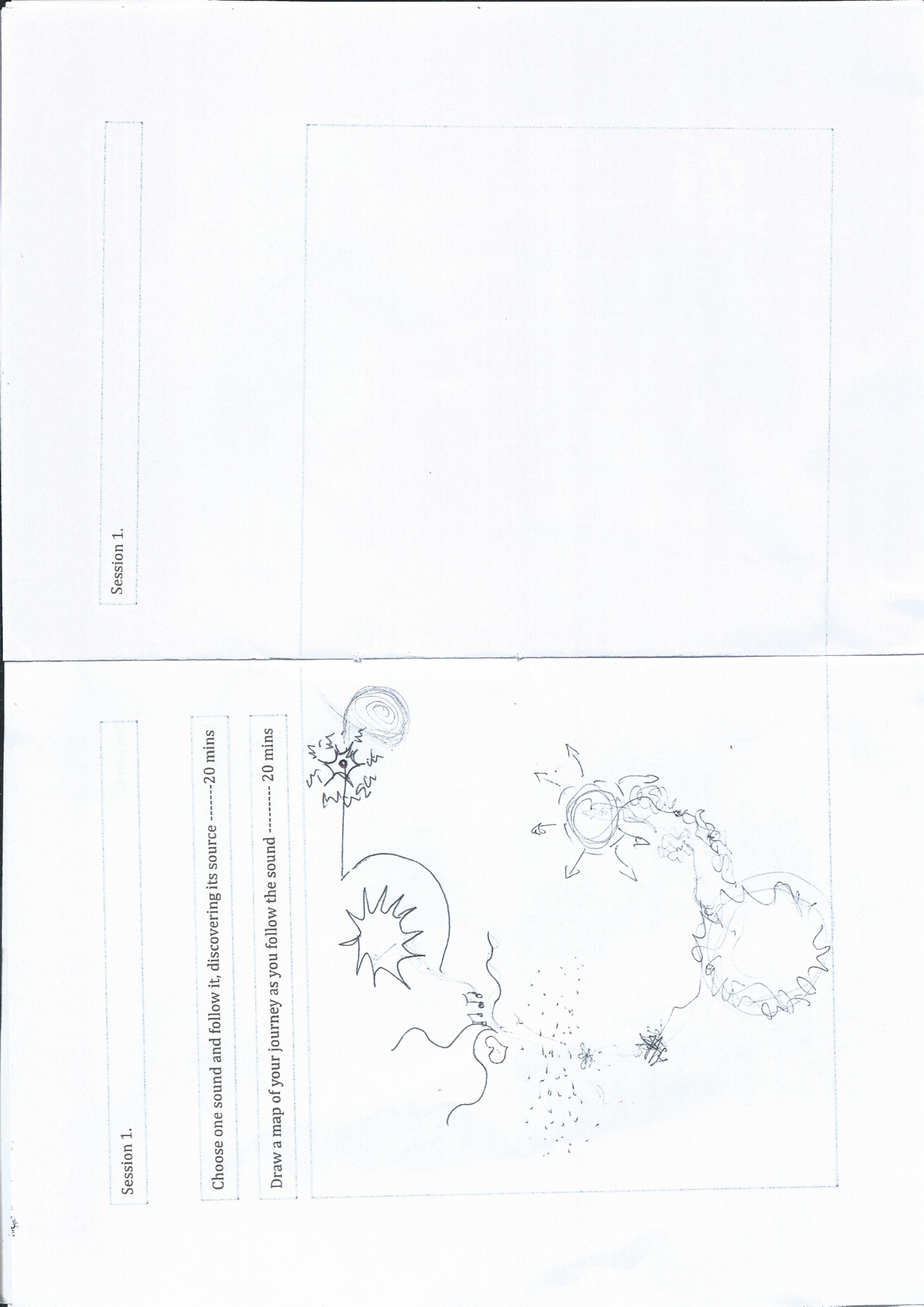
Captures of the StrandLab LandxKUNST soundwalk participants.
—
The Shoemaker’s Guest
Sound is vibration. It is the friction between an object in movement and the air that surrounds it. It is the temporary displacement of molecules in the air. This disturbance takes the form of a wave which eventually reaches an ear and is processed into interpretation. The living world is full of sound so we know it is full of movement.
—
There once was a shoemaker who loved very much to make shoes. He loved every step but particularly enjoyed melting the aglets on the laces and tying them together. The final and most important touches. In a year he made a great many pairs. His house was filled with prototypes and attempts at perfecting the shape of one sole, or the bend at the angle of a heel. During the day he was locked inside manufacturing his inventions. And at night he walked. He believed his craftsmanship was only any good if the pair could last through a whole night of walking. For all this investigation he could not afford nor cared to keep sturdy shoes for himself. They always had holes, sloped to the side or came off completely as he walked in and out of his shop.
One day there was a terrible storm. It came from the warm South, from rich and fine deserts. The wind swept up at speeds none had ever recorded. Through the night the city was covered in sand. As everyone took shelter, the shoemaker dutifully stepped out of his shop to begin his walking. He had been working with a particularly fragile leather and was determined to needle at the new pair’s weak spots the next day.
The air was almost opaque but he could see things he had not noticed before. Through the glazed windows he observed a strange serenity. Inside the homes families were warm and dry, children sitting on sofas like trained pets. Oranges and lemons were stacked in bowls and plants were neatly tucked into pots. Like glowing bubbles made of brick and concrete, the citizens’ homes separated them from most everything in the world. Neither the sand nor the darkness could penetrate the walls or creep under the door.
At dawn, the storm had passed leaving only a mist behind. When he reached his doorstep the shoemaker took off the shoes and sat to remove all the sand that had filled the holes and the cracks. Eager to get some precious hours of sleep before returning to his tasks, the shoemaker did not notice one last grain of sand sticking to the sole of his left foot.
Over the next few days and nights, he continued unaware, not noticing the sprout in his home. Things seemed different but he could not put his finger on what exactly had changed.
—
If sound is bound to movement one must realize how much our world is one of constant motion. If humans close their eyes, and so you can too, they will notice that a great many things are moving, falling over, leading lives of their own. Even in presumed silence, even in controlled environments of the indoors, one is bound to hear a bird squeak, a door creak, a fridge hum, a bathroom leak. And when all that is silent, the heart beating, the dust rising, the thumb cracking. There is a reason why the only true silence that can be recorded is in a vacuum, a place without air. But even in the great natural vacuum of outer space, listeners have picked up a humming in the distances between the stars. It is the residual energy of the big bang, radiating through the universe. The evidence is damning! Our world is in constant vibration.
—
The following day, or rather, a couple of hours later, the shoemaker woke up to get back to his shoes. To his surprise a pool of sand had formed at the foot of his bed. It was a deep charcoal hue. He quickly swept it into a pan and away with it. When he got to his shop he had to sweep up more sand, the weight of which was trapping the wooden door. He was happy to find his tools right where he had left them and forgot all about the oddities dispatched by the night.
There were holes to mend, patterns to cut and insoles to shape. The shoemaker’s tasks were engrained in him like any other actions repeated over and over, like a compulsion. It did not matter what order he performed them in; he often started a new pair with three already to finish. He always knew exactly what each needed. Today however, things seemed stiff, unmoving. The leather was hard and the knives were dull. Even the clock seemed slow and lazy. At first the shoemaker thought it was the age finally catching up to him, that it was one of those tired days he would have to get used to. But when he looked down at his hands they were soft. Softer than usual. The folds he had come to know were lighter, less harsh than he remembered.
After fighting to get a pair ready to walk in, the shoemaker stepped out once more. The sun had just set. The sand had been cleared from the streets so that only a trace of the mist remained, making the air heavy. But for the first time in a long long time he heard the faint whistle of the wind blowing through the grass. Entire sprouts were peeking from between the paving stones in the street. It was beautiful, the shoemaker thought. A song come to salute him before the dark, before the miles ahead of him. The softness spread to his heart. It was warm and quiet.
—
Not for nothing, the fabric of the universe — the great giants, planets and suns and stars, and the littlest workers, atoms and electrons — buzz with the same energy. Although humans don’t consider them as sound makers, they control the forces that generate movement on all scales. Wind is the result of the sun’s interaction with the air that is trapped inside the Earth’s atmosphere. As heated air rises, cold air sinks, creating currents and eventually, gusts that travel halfway across the globe. The wind is a peculiar thing because it is what it does. In the english language, the way one describes the wind is almost always fallacious. The wind indeed blows but it really is the blowing itself, it is movement. It is also a peculiar thing because the frequency of the vibrations produced by the wind are too low for human ears to perceive. When one talks about hearing the wind they usually mean the sound of whatever is agitated by the wind. Which is most everything in the world.
—
Very soon the darkness arrived and sooner even it waned. The shoemaker had walked all night following the cracks in the pavement, following the symptoms of spring in winter. At dawn he returned home once more and was relieved to take off the battered shoes. They had come apart completely during the nocturnal trial. And though they were full of holes they felt tight around the shoemaker’s feet. As he pushed open the door to his home, the smell of earth came waltzing through. All along the corridors in his house, in each room, lining every wall, the shoemaker found heaps of sand and soil. On the heap closest to his bed the same whistling that had greeted him at twilight was waving to him once more. A single stem, a compact fountain of curly leaves agitated bybthe open door. Exhausted, the man undressed and climbed into bed, careful not to disturb the small child growing on his floor. Whether he was already dreaming or the night had brought him visions, the shoemaker did not care. So he slept. That morning the shoemaker slept for longer than he ever had. He slept through midday and through dusk and midnight as well.
—
Though humans cannot hear the wind itself, it is the primary hurdle when it comes to recording equipment. When trying to capture sound one often has to go through great trouble to keep the wind from disturbing the sensitive microphones. This is also true of the human ear. When strong wind blows towards the ear, its structure, bone and cartilage, as well as whatever may be near it cause friction which in turn creates noise. It is something to take shelter from, something to tune out, something that ruins crops, eats at buildings and disturbs electronics. It is an intruder.
—
It was thirst only that dared wake the sleeping man. It was a fiercely bright morning. He crawled out from under his sheets covered in sweat. He reached for the floor with his hands and climbed down, one limb after the other. Instead of the wooden slats his feet had come to know, the shoemaker met the tiny mounds and valleys the night’s sleep had made him forget. His fingers sunk slightly in the dampness. On all fours, his eyes adjusting to the brightness, he started for the nearest sink. He was so thirsty that when he soon felt a pool before him he did not hesitate to lower himself and drink from it. Finally able to open his eyes the shoemaker realized that he did not recognize his home. The whistle had taken root.
The pool he was drinking from was strewn with waterlilies and buzzing with mosquitoes and horse flies. All around it great big trees had swallowed the furniture and broken through the ceiling. Rubber trees harboring bats and bees and Maripa palms flourishing and many more that the shoemaker had only ever heard of. The walls were covered in gigantic orchids and zebra plants, mushrooms big and small, ferns overflowing. Rain started to pour in. Nothing he had seen resembled what now lay quietly in his home. Slowly he got up and looked down at himself and his shoe-making hands. They were covered in the fertile black sand from which everything was growing. He could not remember much of life. Only that a shoe suddenly seemed like an absurd and violent thing.
—
The wind, like many other things that operate on non-human scales, is considered a parasite. But its vibration, its cycles as well as its improvisations, are one of the greatest sources of life on Earth. It regulates sub-climates, pollinates nutrient-poor soils, brings rainfall or wildfire to regenerate entire ecosystems. The friction it creates itself is the source of so many vital chains of events humans simply cannot grasp. There are humans who have tried to harness it, to predict its every movement. There are also those who know that it is unpredictable and wild, this big breath of the Earth. There are sailors and bird-people who know how to find the oasis in the eye of the storm. Some even say that if you bring the wind home with you it will bloom.
This story takes inspiration and details from the natural phenomenon that links the Bodélé depression, formed by the drying up of lake Chad, and the Amazon rainforest. The extremely fertile sediments dried by the sun on the exposed lake bed are swept up by strong winds that carry this dust all the way across the Atlantic. The Amazon relies on this dust for the growth and nourishment of the majority of its flora.